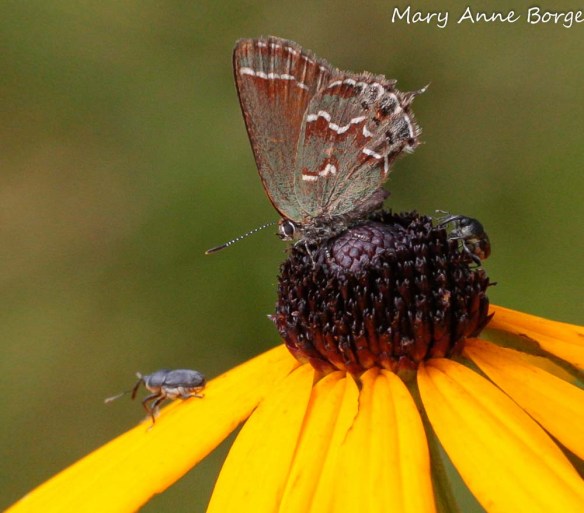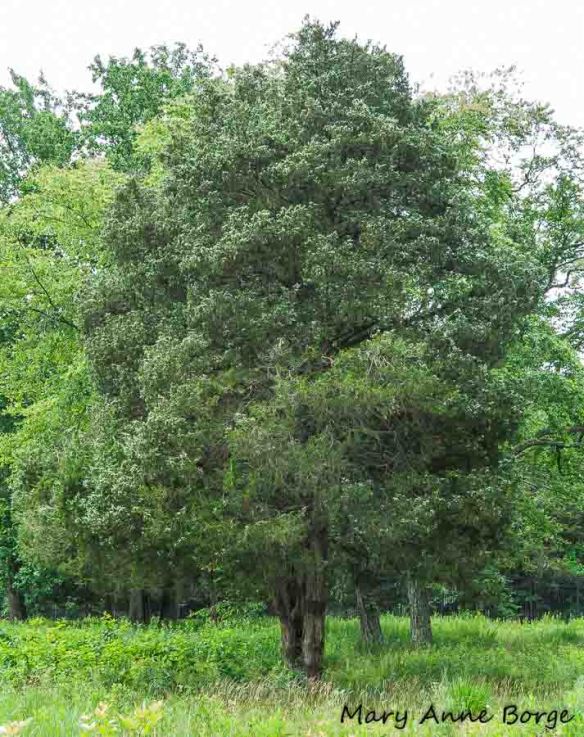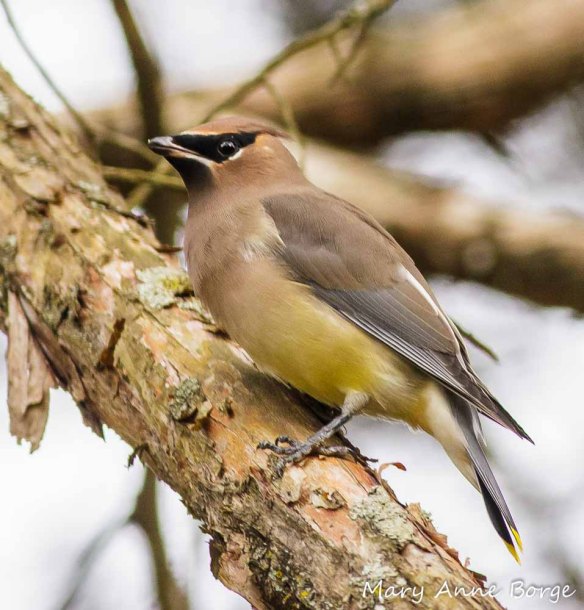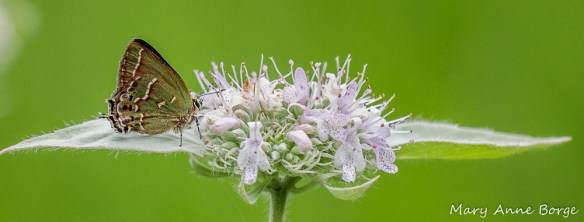Swift movement outside the window caught my eye, as a bird landed in a nearby tree branch. Was that a Cedar Waxwing?

Another bird came in for a landing.
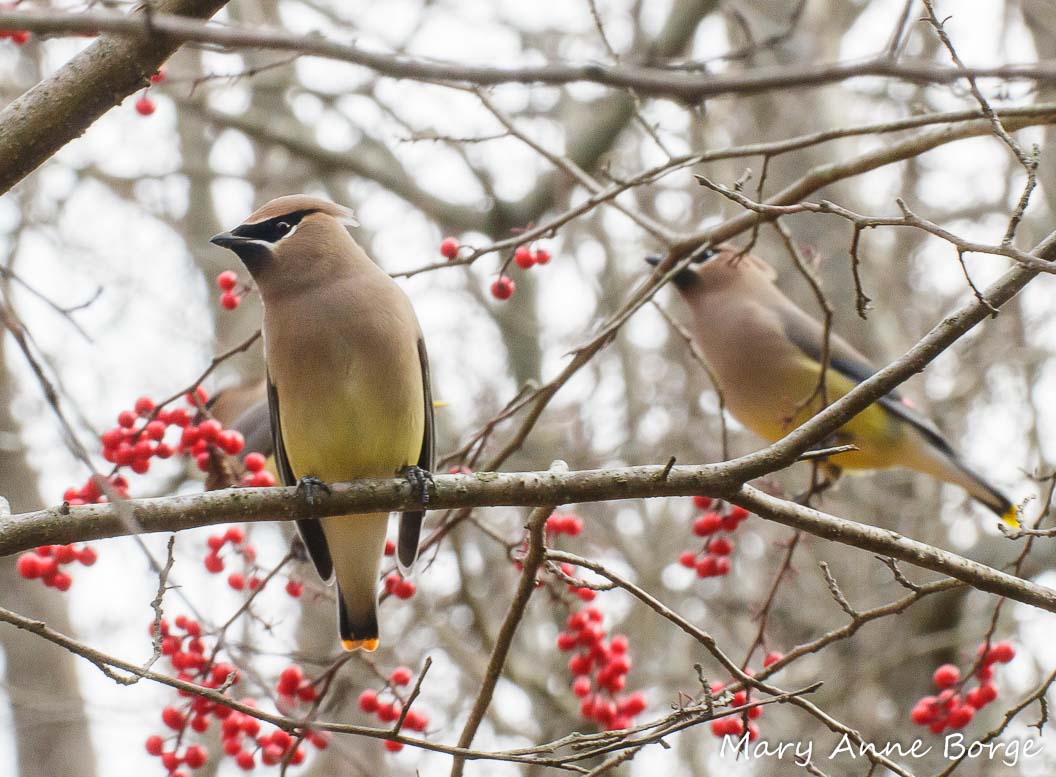
Then another.
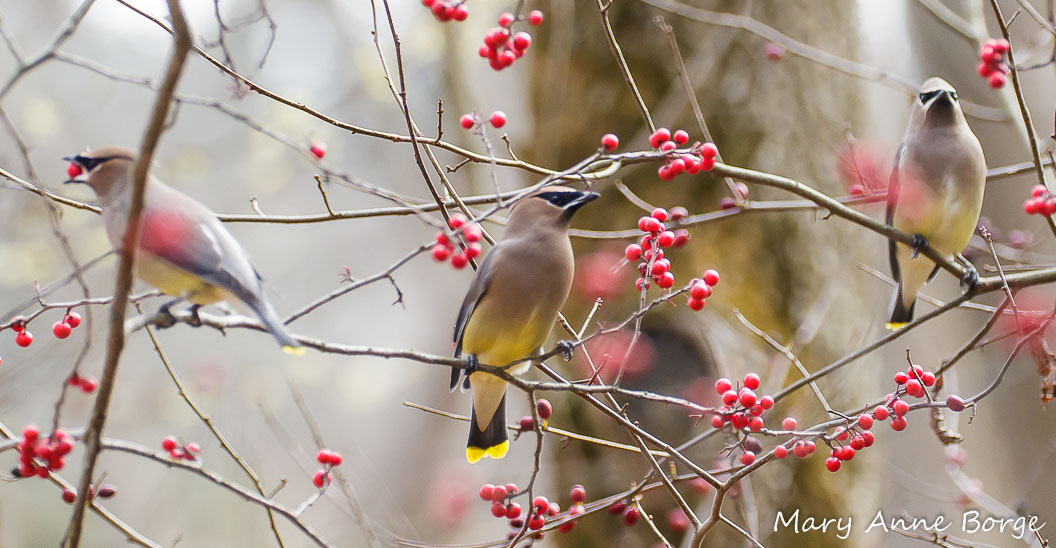
They kept coming, until there was a flock of Cedar Waxwings perched in and around our Winterberry Hollies (Ilex verticillata).
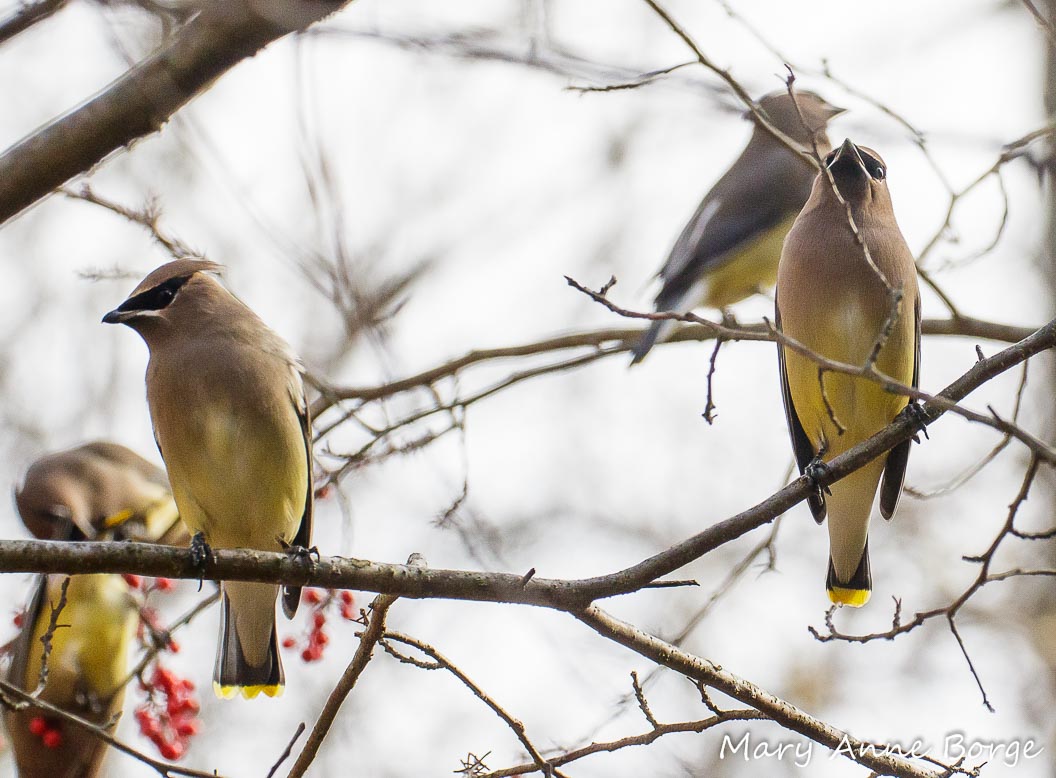
They were here, of course, for the fruit. Cedar Waxwings are especially dependent on fruit in their diet, so much so that ‘Cedar’ in their common name is a nod to Eastern Red Cedar (Juniperus virginiana), whose fruit-like cones are an important source of winter food for this bird. The other part of their common name, ‘Waxwing’, refers to the waxy looking red tips on their secondary wing feathers.
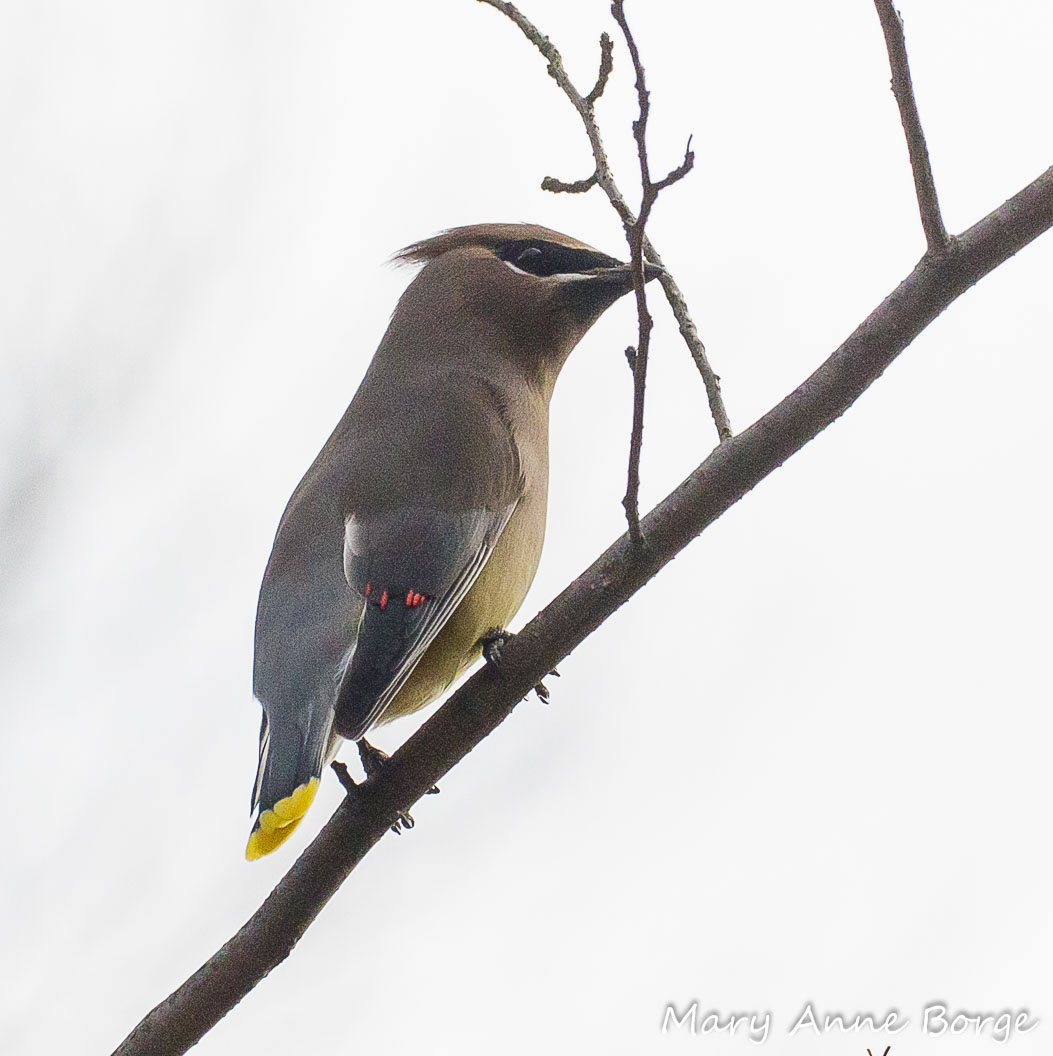
Like most other birds, Cedar Waxwings also eat insects, especially when they are breeding and raising young. I did see one bird take a break from the Winterberry fruit to browse the branches of a nearby Witch-hazel (Hammamelis virginiana) for some insect protein. But fruit was the main attraction for this flock.
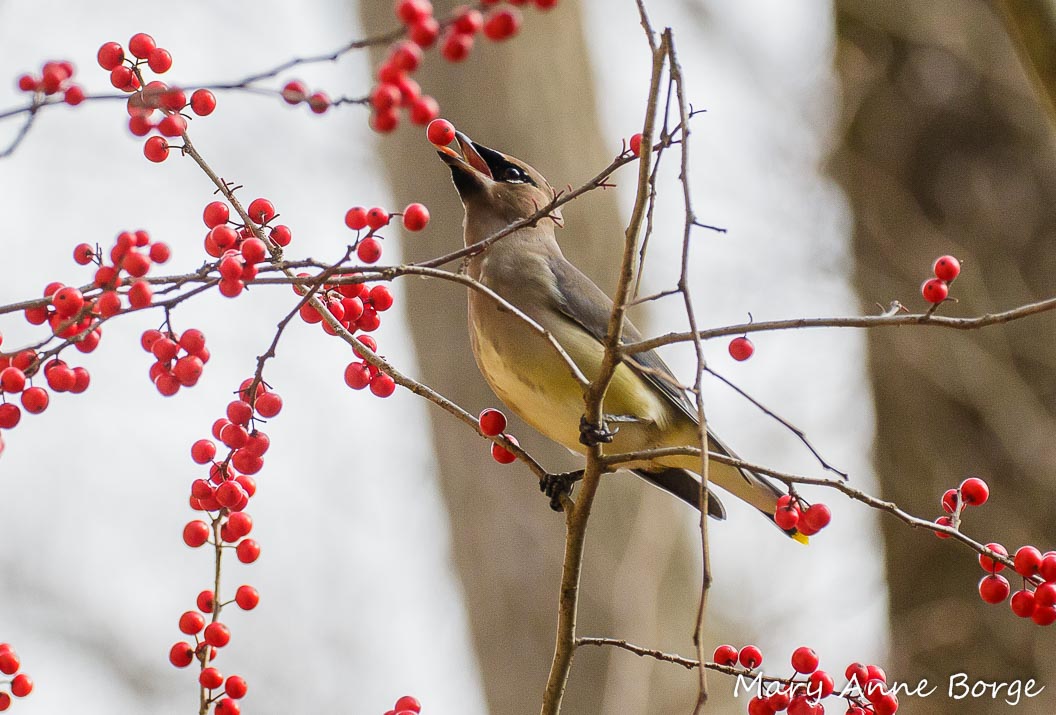
While I watched, the birds put on an impressive acrobatic display in pursuit of the delectable fruit.

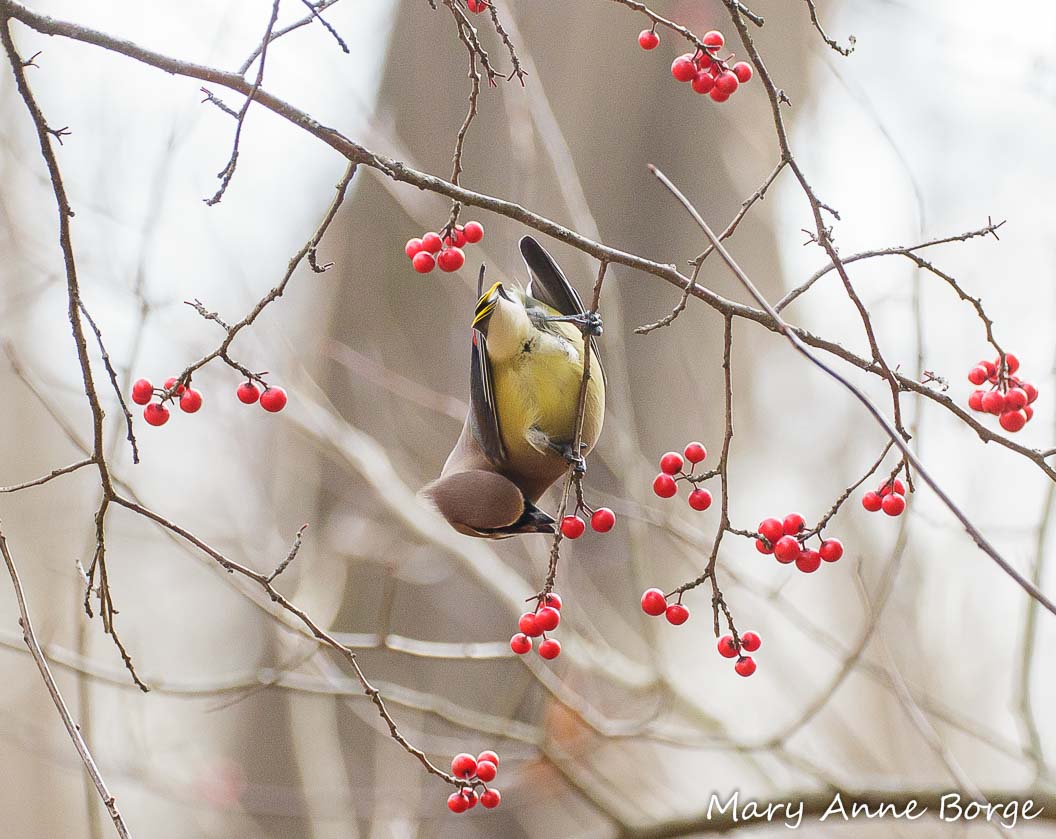
It’s not by accident that such an abundance of fruit is available for these and other birds. The groundwork is laid in late spring, typically June where I am in central New Jersey, when these shrubs produce a wealth of small flowers that are a major attraction for pollinators, including many different species of bees, wasps and flies.
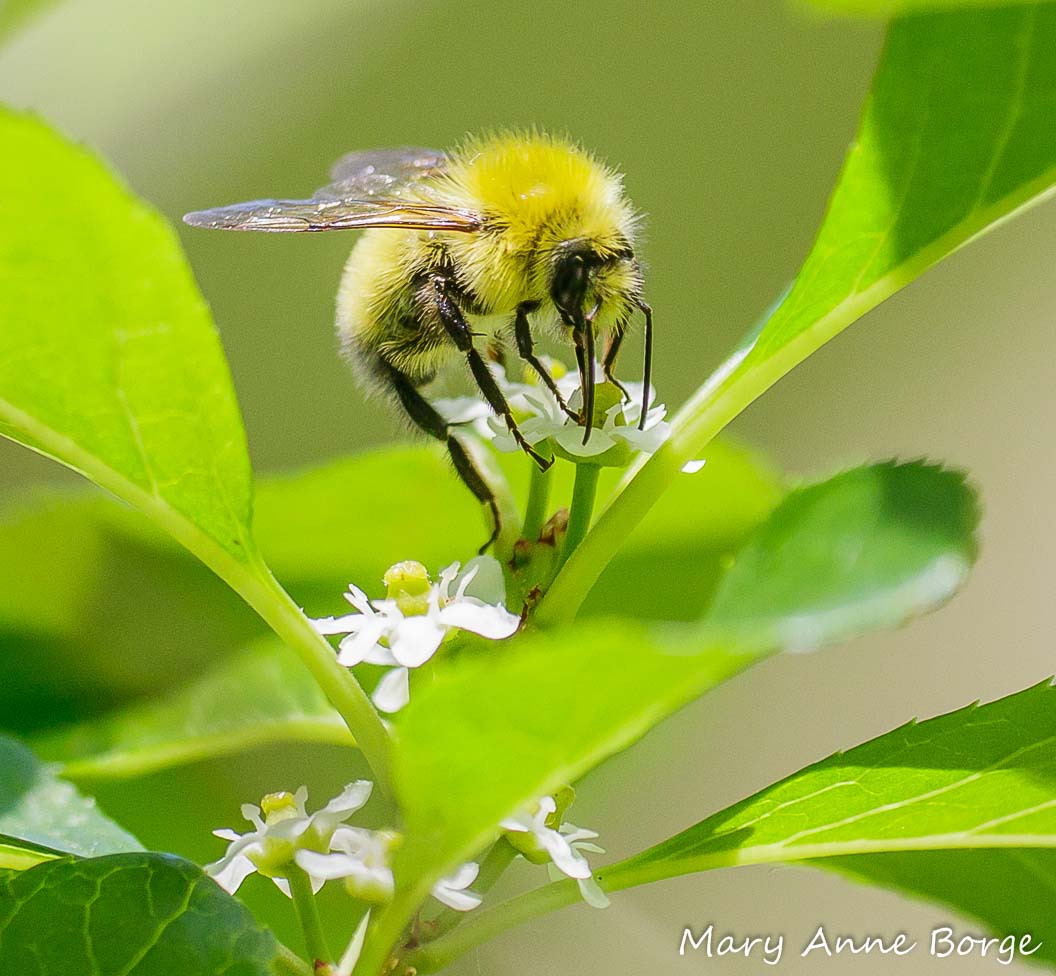
While they stayed with us, the Cedar Waxwings also ate the remaining Blackhaw Viburnum (Viburnum prunifolium) drupes, as well as some crab apples. The birds moved on after three days, when the trees and shrubs were stripped of their bounty. It was a mesmerizing spectacle while it lasted.
Cedar Waxwings are typically found in woodland habitats, near water or woods edges, but they are sometimes found in open fields, too. It all depends on food availability. They are sociable birds, and often nest in proximity to other members of their species, with several nests possible in a single ‘neighborhood’. When they aren’t breeding, they travel in flocks, moving from place to place to find the fruit they need. A few days before the invasion of this flock, I saw one or two Cedar Waxwings in the trees outside. Because of their gregarious nature, it’s unusual to see a lone bird of this species. Now I can’t help wondering if these early birds were scouts, looking for the next food stop for the group.
To attract Cedar Waxwings to your own yard, be sure to provide the fruit they love. In addition to Winterberry Holly and Eastern Red Cedar, American Holly (Ilex opaca), Flowering Dogwood (Cornus florida), native viburnums such as Blackhaw (Viburnum prunifolium), Pokeweed (Phytolacca americana), Mountain Ash (Sorbus americana), hawthorns, apples and grapes are all very appealing to this sleek and lovely bird. To see them in summer, offer them blueberries, serviceberries, cherries and blackberries, among other fruit.
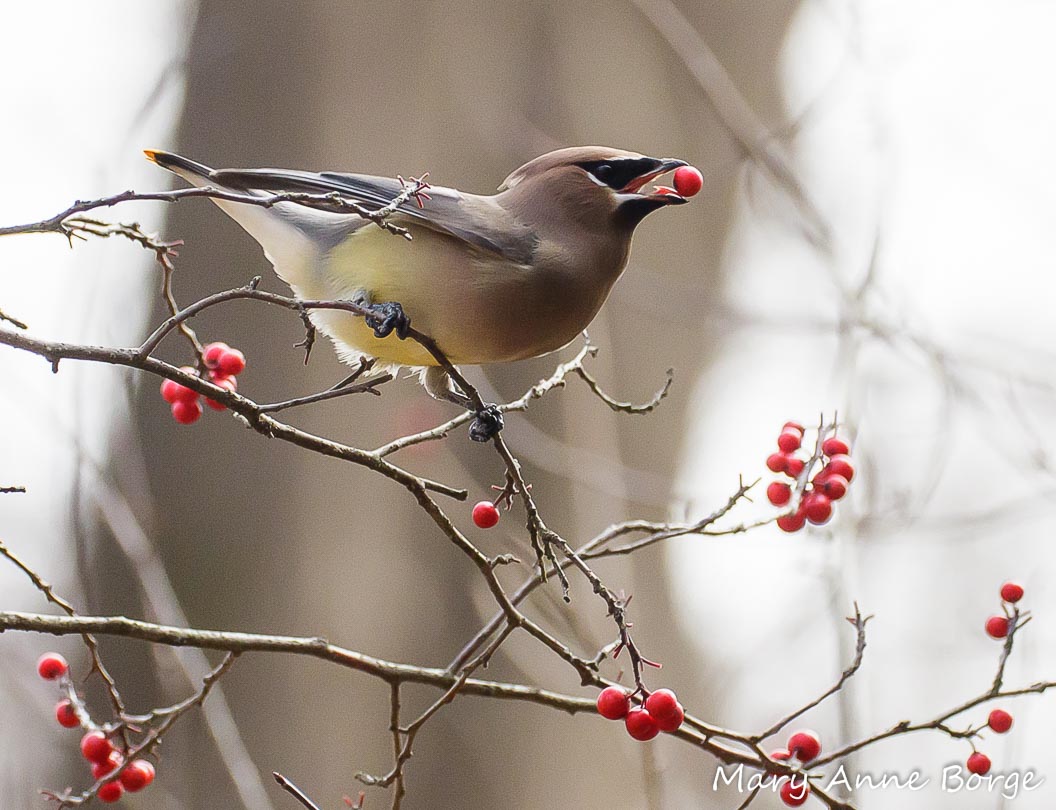
Related Posts
Where Do Winterberries Come From?
Blackhaw Viburnum – A Subtle Beauty
What Do Juniper Hairstreaks and Cedar Waxwings Have in Common?
Resources
All About Birds, the Cornell Lab
Sibley, David Allen. The Sibley Guide to Bird Life & Behavior. 2001.



